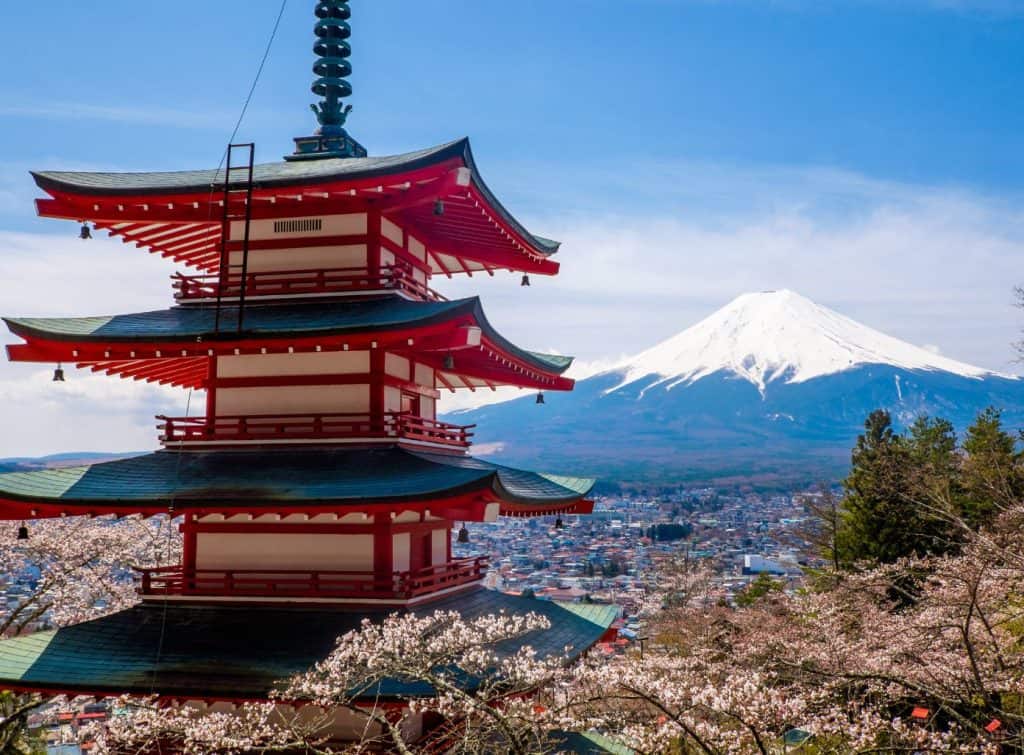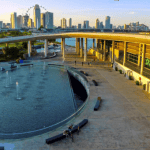Planning a trip from Singapore to Japan can be an exciting and enriching experience. Whether you are a first-time traveler or a seasoned globetrotter, there are several factors to consider before embarking on your journey. From understanding the basics of travel from Singapore to Japan to choosing your destinations and accommodation options, this article will guide you through the planning process and help make your trip a memorable one.
Understanding the Basics of Travel from Singapore to Japan
Before you start packing your bags, it is important to familiarize yourself with the basics of travel from Singapore to Japan. This includes understanding the flight duration and time difference, as well as the visa requirements for Singaporeans.
Flight Duration and Time Difference
The flight duration from Singapore to Japan varies depending on the city you are flying to. On average, it takes about 6 to 7 hours to fly from Singapore to Tokyo. However, if you are traveling to other cities like Osaka or Sapporo, the flight duration may be longer. It is advisable to check the flight schedules and plan your itinerary accordingly.
In addition to the flight duration, you should also be aware of the time difference between Singapore and Japan. Japan is one hour ahead of Singapore, so you may experience some jet lag upon arrival. It is a good idea to rest and adjust your sleep schedule to minimize the effects of jet lag.
Visa Requirements for Singaporeans
As a citizen of Singapore, you do not need a visa to enter Japan for short-term stays of up to 90 days. However, you will need to ensure that your passport is valid for at least six months from the date of entry. It is also recommended to carry a copy of your return ticket and proof of accommodation, as you may be asked to present these documents upon arrival in Japan.
For longer stays or if you plan to work in Japan, you will need to obtain the appropriate visa before your trip. It is advisable to check the Embassy of Japan website for the most up-to-date information regarding visa requirements.
Best Time to Visit Japan
Japan is a country that experiences distinct seasons, each with its own unique charm. The best time to visit Japan depends on your preferences and the activities you wish to engage in during your trip.
If you are a fan of cherry blossoms, spring (March to May) is the perfect time to visit. The cherry blossoms are in full bloom, creating a picturesque scenery across the country. However, this is also a peak tourist season, so expect larger crowds and higher prices.
For those who enjoy mild weather, autumn (September to November) is a great time to visit. The temperatures are pleasant, and you can witness the beautiful autumn foliage in places like Kyoto and Nikko.
If you are a winter enthusiast, December to February is the ideal time to visit Hokkaido. The region is known for its powdery snow and offers excellent skiing and snowboarding opportunities.
Ultimately, the best time to visit Japan depends on your preferences, so plan your trip accordingly to make the most of your experience.
Preparing for Your Trip
Once you have a good understanding of the basics, it’s time to start preparing for your trip to Japan. This includes packing essential items, learning basic Japanese phrases, and familiarizing yourself with Japanese culture and etiquette.

Essential Items to Pack
When packing for your trip to Japan, it is important to consider the season and the activities you plan to engage in. Some essential items to pack include comfortable walking shoes, appropriate clothing for the season, and a universal power adapter for your electronics.
If you plan to visit during the summer months, don’t forget to pack sunscreen, a hat, and insect repellent. In the winter, make sure to pack warm clothing, including a good quality coat, gloves, and a hat, especially if you plan to visit colder regions like Hokkaido.
It is also a good idea to pack a pocket Wi-Fi device or a SIM card with data so that you can stay connected during your trip. Additionally, bring a small backpack or daypack to carry your essentials while exploring Japan.
Learning Basic Japanese Phrases
While English is widely spoken in tourist areas, learning some basic Japanese phrases can go a long way in enhancing your travel experience. Familiarize yourself with common phrases such as greetings, ordering food, asking for directions, and expressing gratitude.
The Japanese people appreciate visitors who make an effort to communicate in their language. By learning a few basic phrases, you can show respect and make meaningful connections with the locals.
Understanding Japanese Culture and Etiquette
Japan has a rich cultural heritage, and it is essential to understand and respect the local customs and etiquette. For example, it is customary to bow when greeting someone, especially when meeting someone for the first time.
Additionally, in Japan, it is considered impolite to eat or drink while walking. It is best to find a designated area such as a park or a restaurant to enjoy your food and beverages.
When visiting temples and shrines, it is important to be respectful by removing your shoes before entering and refraining from taking photographs in prohibited areas.
By familiarizing yourself with Japanese culture and etiquette, you can ensure a smooth and respectful interaction with the locals, which will enhance your overall travel experience.
Choosing Your Japanese Destinations
Japan offers a diverse range of destinations, each with its own unique attractions and experiences. From the bustling capital of Tokyo to the historic city of Kyoto and the stunning landscapes of Hokkaido, there is something for everyone.

Exploring Tokyo’s Urban Jungle
Tokyo, the capital city of Japan, is a vibrant metropolis known for its cutting-edge technology, bustling streets, and vibrant nightlife. Explore the futuristic neighborhoods of Shibuya and Shinjuku, visit iconic landmarks such as the Tokyo Tower and the Imperial Palace, and indulge in delicious street food at Tsukiji Fish Market.
For art enthusiasts, a visit to the Tokyo National Museum or the teamLab Borderless digital art museum is a must. Don’t forget to relax in one of Tokyo’s beautiful parks, such as Ueno Park or Shinjuku Gyoen, which offer a peaceful retreat from the hustle and bustle of the city.
Experiencing Kyoto’s Historical Charm
Step back in time and immerse yourself in the traditional charm of Kyoto. Known for its historic temples, beautiful gardens, and traditional geisha culture, Kyoto offers a glimpse into Japan’s rich history.
Visit iconic sites such as Kiyomizu-dera Temple, Fushimi Inari Shrine, and the famous Arashiyama Bamboo Grove. Take a stroll through the historic Gion district and keep an eye out for geisha and maiko, elegantly dressed women who entertain through different art forms.
Venturing into Hokkaido’s Wilderness
If you are a nature lover, Hokkaido is the perfect destination for you. This northernmost island of Japan boasts stunning landscapes, including national parks, hot springs, and ski resorts.
Explore the breathtaking beauty of Daisetsuzan National Park, witness the famous lavender fields in Furano, or embark on a wildlife adventure in Shiretoko National Park. Hokkaido also offers excellent skiing and snowboarding opportunities during the winter months, making it a paradise for winter sports enthusiasts.
Accommodation Options in Japan
When it comes to accommodation in Japan, you have a wide range of options to choose from, depending on your budget and preferences. From luxury hotels and resorts to traditional ryokans and budget-friendly hostels, there is something for every traveler.
Luxury Hotels and Resorts
If you prefer luxurious accommodations, Japan has a plethora of high-end hotels and resorts to choose from. Experience world-class hospitality, spacious rooms, and top-notch facilities. Some renowned luxury hotels include the Aman Tokyo, the Ritz-Carlton Tokyo, and the Park Hyatt Tokyo, made famous by the movie “Lost in Translation.”
Traditional Ryokans
For a truly authentic Japanese experience, consider staying at a traditional ryokan. These traditional inns offer traditional tatami mat rooms, communal baths, and kaiseki meals, which are multi-course traditional Japanese dinners.
You can relax in a yukata (a traditional robe) and enjoy the peaceful ambiance of a ryokan. Some popular ryokans include Gion Hatanaka in Kyoto, Hakone Yuryo in Hakone, and Magome Chaya in the historic village of Magome.
Budget-Friendly Hostels
If you are traveling on a budget, hostels are a great option. Japan has a wide range of clean and comfortable hostels that offer dormitory-style accommodation at affordable prices. Hostels are also an excellent way to meet fellow travelers and exchange travel tips.
Some popular hostels include K’s House Tokyo Oasis in Tokyo, Khaosan Kyoto Guesthouse in Kyoto, and Guest House Itoya in Osaka.
Planning a trip from Singapore to Japan requires careful consideration and preparation. By understanding the basics of travel, preparing for your trip, choosing the right destinations, and selecting suitable accommodations, you will be well on your way to creating unforgettable memories in the Land of the Rising Sun. Bon voyage!








